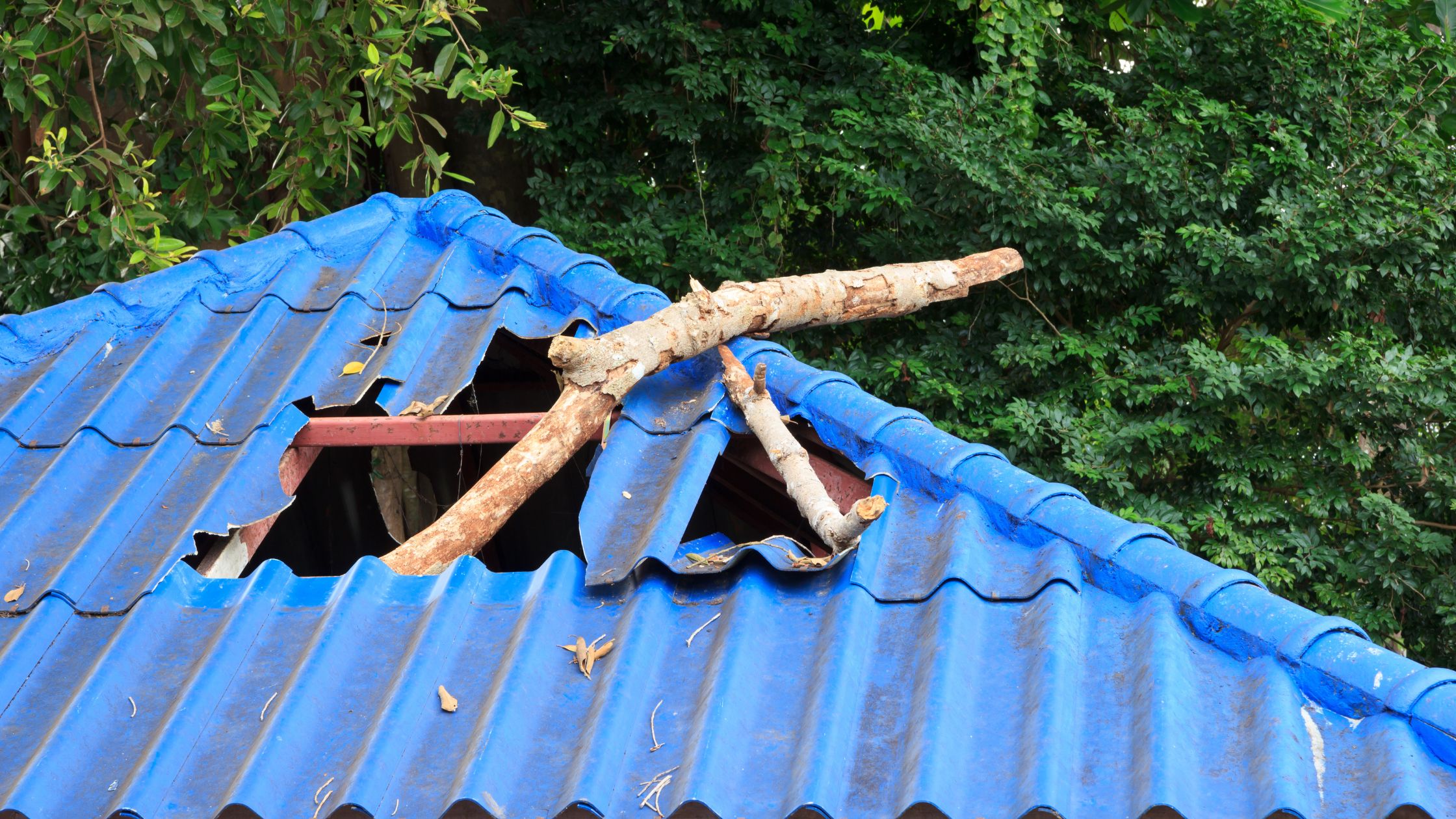
What to Do About Branches Hanging Over Walkways or Rooflines
🌳 Key Takeaway: Don’t Ignore Branches Hanging Over Your Roof
Branches hanging over your roof or walkways can cause serious problems — from damaging shingles to creating pest access or injury risks. Trim them as soon as possible, ideally before storm season or signs of wear appear. A proactive approach is cheaper and safer than emergency tree work.
Introduction: Why Worry About Branches Hanging Over Your Roof?
You look up and notice it — a thick tree branch hanging over your roof or stretching across your front walkway. It might not seem like a big deal now, but branches hanging over the roof can quickly become a hazard. Whether they’re scraping shingles, blocking safe access, or poised to fall during a storm, it’s a situation that calls for attention.
In this guide, we’ll cover:
-
Why overhanging branches are risky
-
When to trim vs. remove a tree or limb
-
Who’s responsible when the tree isn’t yours
-
How to handle it — whether you DIY or hire help
Why Branches Hanging Over the Roof or Walkway Are a Problem
Overhanging branches may look scenic, but they bring a long list of headaches:
-
Injury risk: A cracked or dead branch could fall on someone below, especially during storms or winter snow loads.
-
Roof damage: Constant rubbing can wear away shingles, damage gutters, or cause roof leaks.
-
Blocked access: Low-hanging limbs can make sidewalks, mailboxes, or porches difficult or dangerous to reach.
-
Pest superhighways: Squirrels, raccoons, ants, and even carpenter bees can use these branches as a direct path into your attic or siding.
-
Legal liability: If branches hanging over a roof cause property damage, you might be held responsible — or have grounds to request action from a neighbor.
How to Evaluate Branches Hanging Over the Roof or Walkway
Before you grab the pole saw or call a tree company, assess the situation:
1. Is the branch dead, cracked, or diseased?
Any visible damage means it needs to come down immediately — especially if it’s directly over a roof, sidewalk, or parking area.
2. Is the branch touching the roof or scraping shingles?
Even healthy limbs can cause damage over time. Trimming these early can prevent leaks and extend roof life.
3. Is it near utility lines?
Do not attempt to trim anything near power lines. Call your electric company or a certified arborist with line clearance training.
4. What’s the size of the branch?
-
Under 2″ diameter: Generally safe for DIY trimming
-
2″–6″: Proceed with caution; consider a professional
-
Over 6″: Likely requires expert removal to avoid damage
✂️ Option 1: Trim the Branch Back
If the branch is healthy and the tree is otherwise strong, a clean trim may be all that’s needed.
Tips for trimming branches hanging over your roof or path:
-
Make clean cuts at the branch collar (not flush against the trunk)
-
Trim limbs before they cross over structures or grow downward into walkways
-
Use clean, sharp tools to avoid infection
-
Don’t trim during extreme heat or deep freezes
🗓 Best time to trim:
Late winter to early spring or mid-fall. Avoid trimming during peak summer stress or right before a storm.
🪓 Option 2: Remove the Branch — or the Whole Tree
Sometimes trimming isn’t enough. If the branch is too large, part of a declining tree, or causing repeated problems, full removal is the safer option.
Consider tree removal if:
-
More than 25% of the canopy is dead or dying
-
There’s visible rot at the base or in large limbs
-
The tree repeatedly damages property or interferes with utility access
Northeast Ohio Tip:
Oaks, sugar maples, and older fruit trees are common causes of branches hanging over roofs. After years of unchecked growth, even healthy trees can threaten structures.
🔧 Option 3: Temporary Fixes for Overhanging Branches
If you’re waiting on permits, weather, or a pro, these short-term solutions may help:
-
Rope/stake small limbs to redirect growth away from walkways
-
Redirect traffic with temporary barriers or signage
-
Add roof or gutter guards to reduce friction damage
-
Install trellis-style structures (like pergolas) to block access without cutting right away
These are not permanent fixes, but they can buy time until safe trimming is possible.
🏠 Who’s Responsible for Branches Hanging Over a Roof?
If the tree is on your property:
You’re responsible for maintaining it, especially if limbs extend over your own roof or walkway.
If the branch belongs to a neighbor’s tree:
You typically have the right to trim anything that crosses your property line — but you must not harm the tree or cut beyond the line.
💬 Pro Tip:
Before cutting, talk to your neighbor. Most people appreciate the heads-up, and it helps avoid tension or liability concerns.
🧰 Should You Trim It Yourself or Call a Pro?
You can trim it yourself if:
-
It’s under 2–3 inches in diameter
-
It’s easily reachable from the ground (no ladder needed)
-
It’s not near power lines or rooftops
Call a professional if:
-
The limb is large, elevated, or growing under tension
-
The tree is diseased or structurally unsound
-
There’s risk to your home, garage, or fence if the branch drops incorrectly
Local arborists in the Cleveland area often provide free or low-cost evaluations, especially if storm damage is a concern. Look for ISA-certified professionals.
❄️ Bonus: Winter Prep for Northeast Ohio Homes
Branches that seem harmless in June can become dangerous by December. Snow and ice add weight, turning overhanging limbs into snapping hazards.
Schedule fall trimming to:
-
Reduce winter weight loads
-
Prevent ice damage to roofs and gutters
-
Keep sidewalks and driveways clear of hazards
Last Updated: 6/21/25




No Comments
Sorry, the comment form is closed at this time.